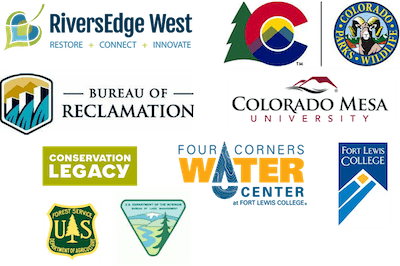DRAMS Project Partners
The five-year monitoring project is a collaboration between Fort Lewis College, Colorado Mesa University, RiversEdge West, Colorado Parks and Wildlife, Bureau of Reclamation, Conservation Legacy, US Forest Service, and Bureau of Land Management.
